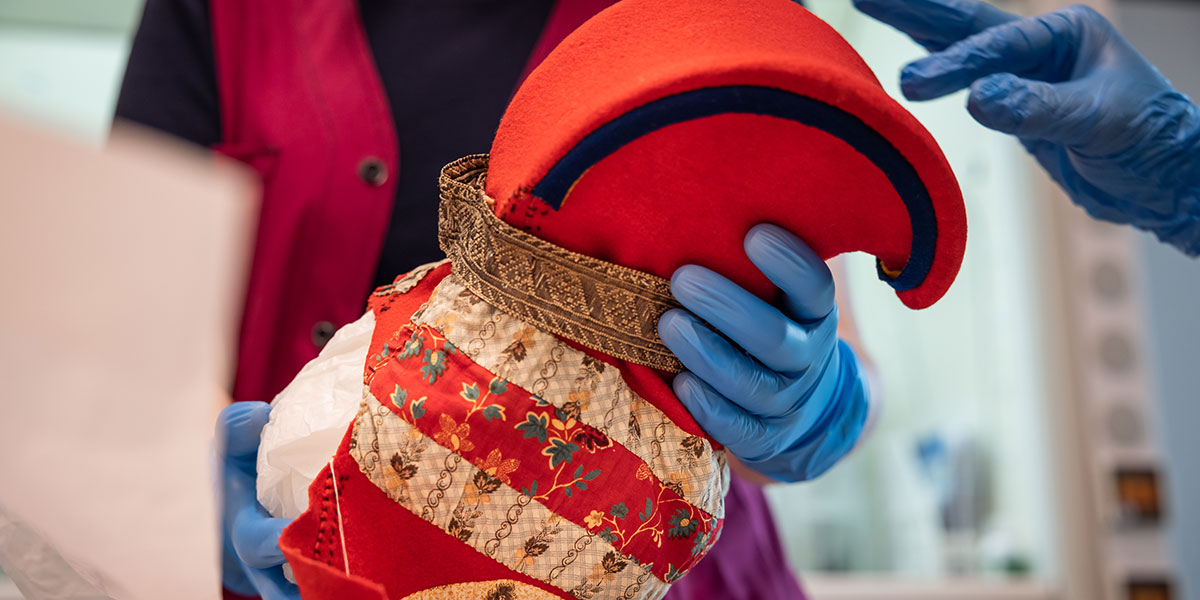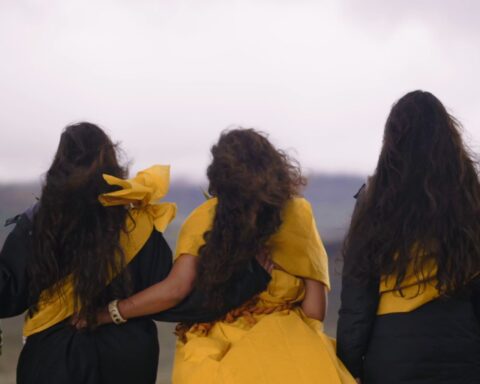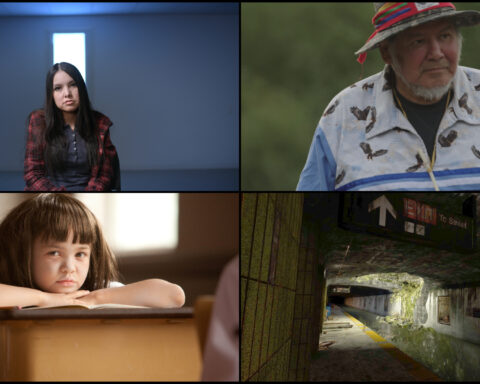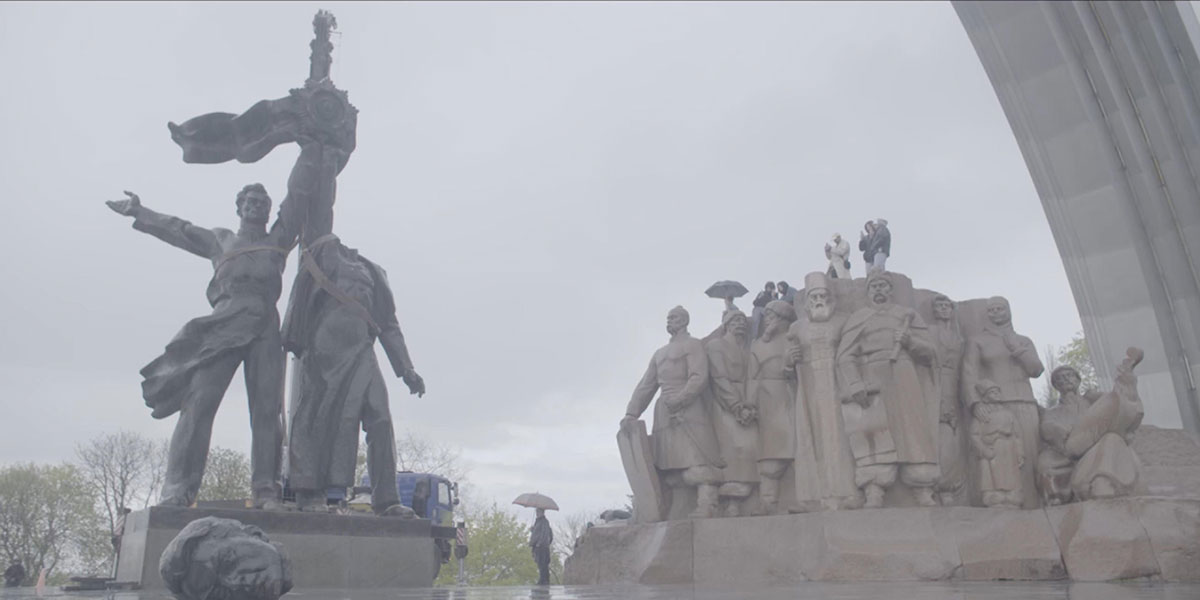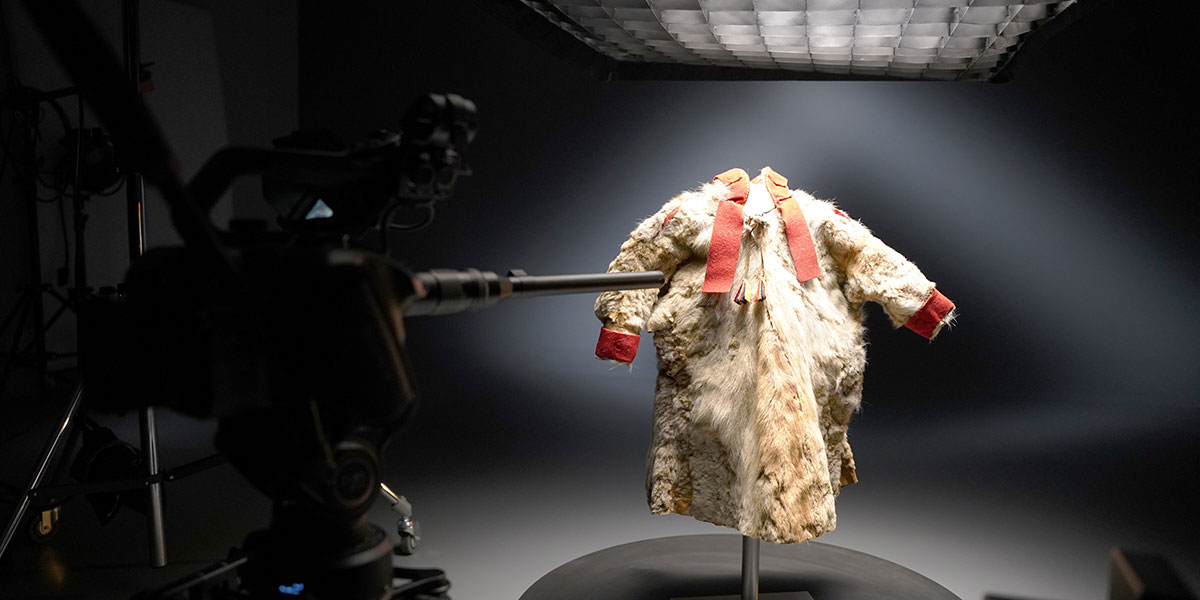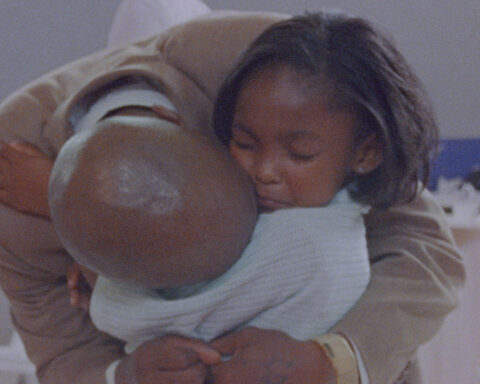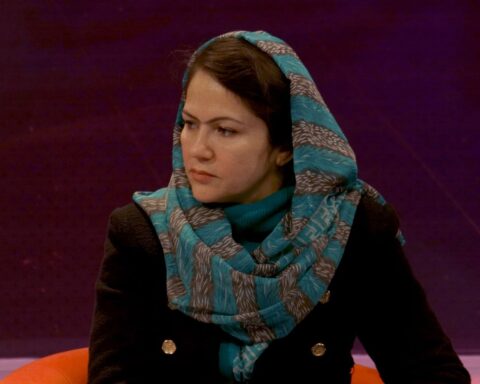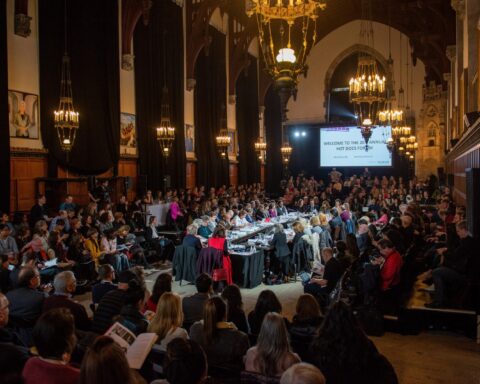Indigenous artifacts and art are hot, very hot. That’s true all over the world, whether they come from the far reaches of New Guinea, here in Canada, where Norval Morriseau’s paintings have been forged and sold for more money than he never dreamed of, or in Scandinavia where the Sámi peoples’ sacred artifacts have been taken and hoarded by private collectors and museums for years.
“People were competing to collect as much Sámi stuff as possible,” bemoans Homecoming co-director Suvi West on a Zoom session from Finland. “They were horny for it.”
Rising awareness of Indigenous rights – to which West herself has contributed thanks to her previous film Eatnameamet (aka Our Silent Struggle), about the Sámis’ fight for survival, both cultural and physical – has led to the repatriation of hundreds of Sámi items to the Siida Sámi Museum in Inari, Finland. West’s doc, created with cinematographer Anssi Kömi, follows the journey of the artifacts to their proper home in a film that packs an emotional wallop.
Mining those powerful feelings might never have happened were West and her co-creator Kömi not so closely connected. When I ask the duo about how their collaboration came about, they look at each and grin, making it obvious that their partnership goes beyond filmmaking.
“We have two children,” West laughs, “I was a show runner for a Finnish comedy TV show and we met there. At first, we did have to decide who can make the decisions, but after some ego battles, we noticed that it was easy to work together. I have the overall vision of the story because I’m a scriptwriter. He has strong visual thinking. When we talk about the subject, he can start to see the images and I feel he understands.”
That became an important dynamic in the development of their documentary. They were still working on Eatnameamet when West heard of the repatriation of a sacred Sámi drum from a German museum. She knew she’d have to pivot and begin shooting a new movie.
Even so, they were fully halfway through the shoot before Homecoming found its own story. Originally, their intention was to make a film about museums, its curators, how they make decisions and the process they go through to collect – the film suggests steal – these items in the first place. But West soon realized the importance of her personal connection to the artifacts, which could have belonged to her own Sámi ancestors. That made the duo want to bring an emotional element to the movie and a spiritual one.
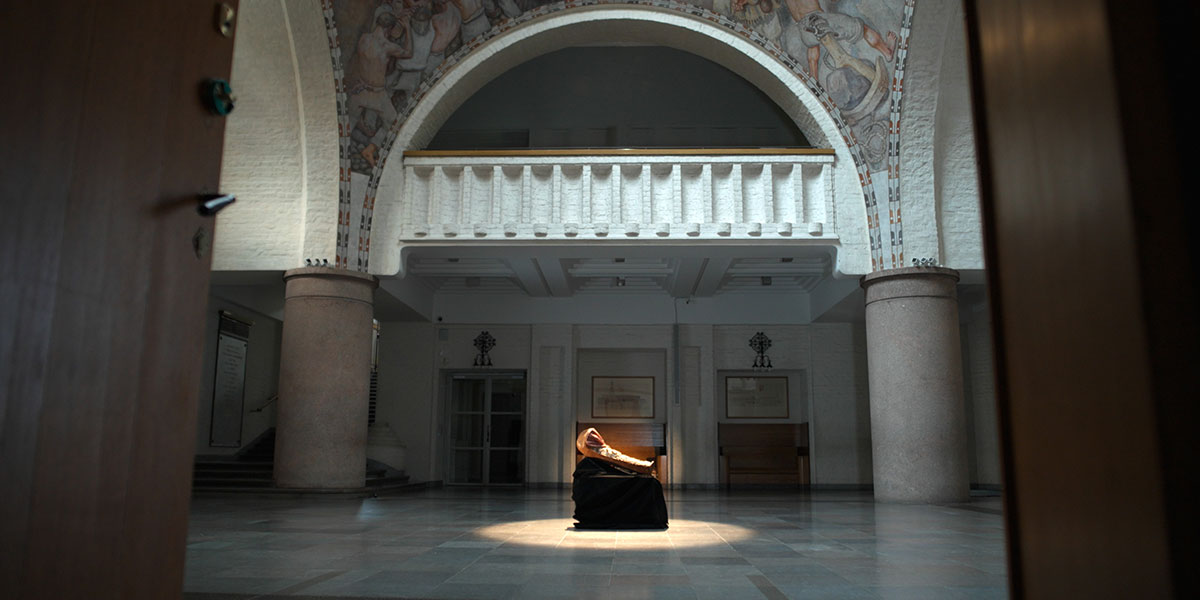
Because Kömi was so intimately connected to West, he instinctively understood the direction the new film had to take.
“There was a painful part of the journey while we were focussing on the museum work,” Kömi recalls. “It was heavy and not moving but when we realized we needed a spiritual focus, we got the freedom to open everything up.”
Kömi also started shooting on a different film ratio. When the project focussed on the inert items in a museum, Cinemascope (generally 2.55:1 as opposed to the standard Academy’s 1.37:1 format) would not have served their purpose.
“But when we knew we were going into the underworld [of West’s ancestors, figuratively; the two refer to where we live as the upworld], we knew the Cinemascope ratio would work.”
That makes for more spectacular images in what is consistently a film that’s beautiful to view. Kömi would never have been able to get an overhead shot of flowing river water with all of its twinkling reflections had he not made that technical shift.
“Our previous movie was political, it needed to be evidence-based,” Kömi goes on. “We couldn’t focus on the movie as an art form. It had to be as real as it gets. When we realized what this was going to be about, we didn’t self-censor and we enjoyed the free flow.”
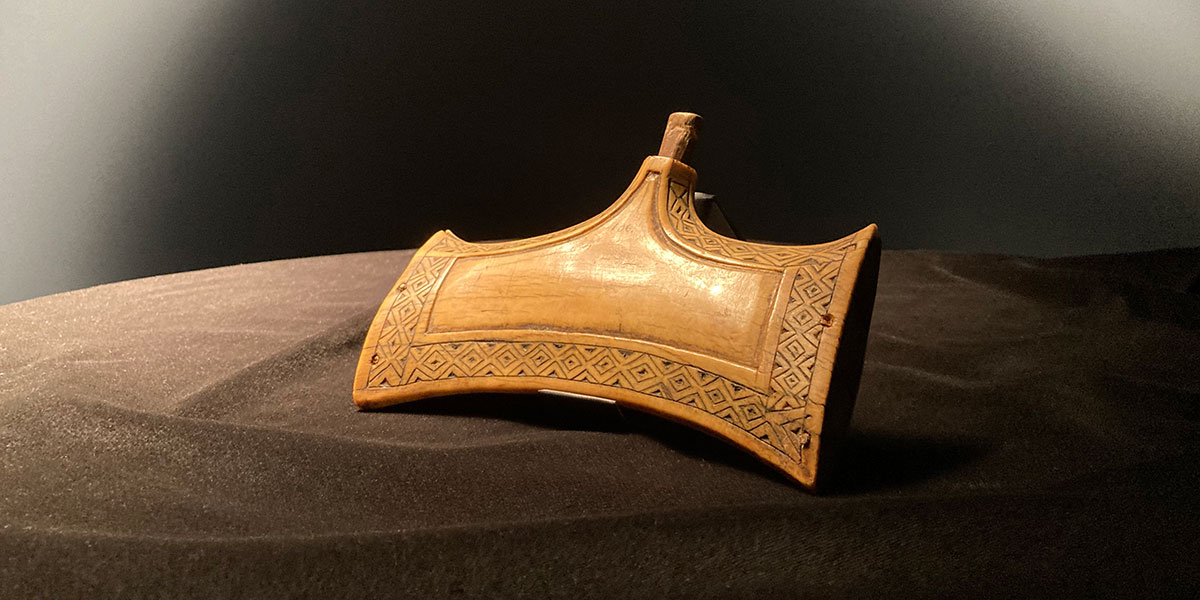
What flowed the most were the powerful emotions that West experienced when she had some of the Sámi items in her hand. “I noticed that when I put myself in front of the camera and became vulnerable…that’s when the story came up.”
And it’s a poignant one, her personal journey to recover her connection to her own ancestors. Many times in the film, she has to wipe away tears. There’s nothing performative about those moments: she’s obviously trying to dry her eyes surreptitiously. But the archival and museum researchers can’t help but notice that potent combination of her sense of loss and her joy in handling these stolen works. One of them is plainly moved: “I see a unique happiness when you’re together with them.” Another says, “I see the items’ energy now that you are present.”
West, beaming at the recollection of those moments, describes the exhilaration as “a feeling that I was bathing in a sacred spring.”
As the film tours the museums where the artifacts have been stored before making their way back home, a central theme of Homecoming emerges through the tension between the attitudes of typical museum curators and the perspective of Indigenous people towards these precious items, which are observed by the filmmakers. The museum representatives see objects, where West sees them as active, living things that connect her to the past.
“It’s about the connection to ancestors,” says West “Many of these items actually take you closer to your ancestors and you can feel that they’re near to you. It’s not about the item, it’s about the connection to a different world.”
“That is the reason why it feels like they come to life when they connect to the right person,” adds Kömi, “someone who can read them and who understands the past [through artifacts from] the culture. When other people study them there’s no living story there.”
When other people study them, even those in museums, trained specialists who should know better make fundamental errors. In a crucial scene, West discovers that she’s been sent the wrong box of artifacts; she hands it back to the curator who insists she look at what’s inside. The curator doesn’t know that doing so would violate the ethics of Indigenous people. The items are sacred and not to be viewed by those outside of the region where the artifacts belong. A similar incident happens in Germany when West is handed a drum made by a group (the Sámi don’t use the word tribe) not her own.
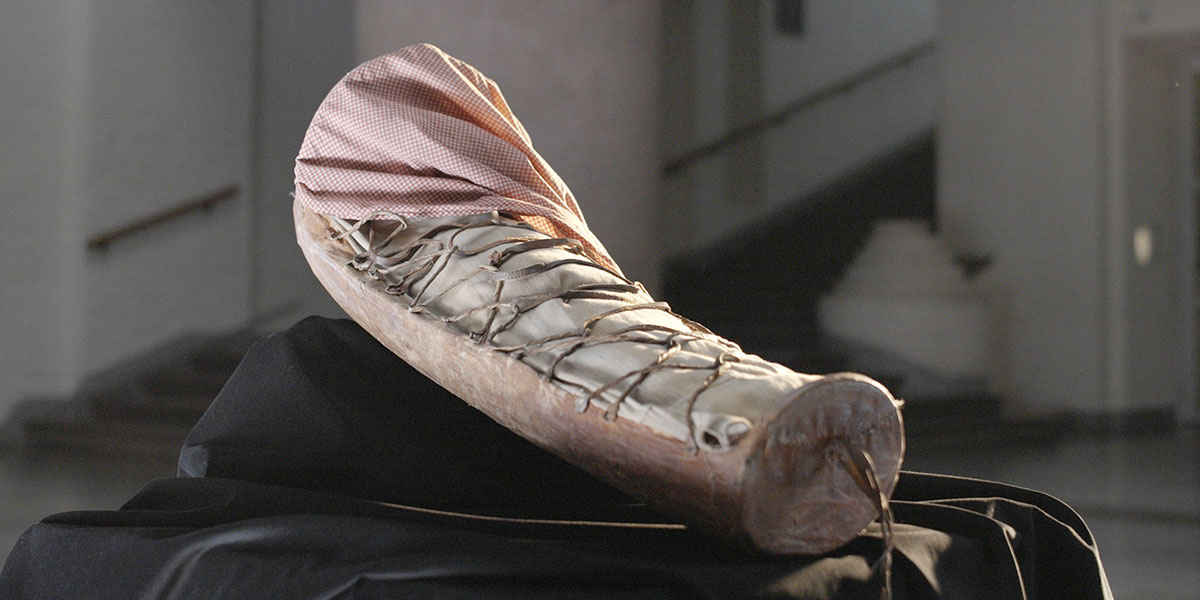
“It was clear to me that I didn’t have permission to see the drum,” West explains. “It was Sámi but it was from a different group. I’m curious how people from other cultures feel that they have permission. Asking permission is always important.”
That principle applies not only to museum items but to the sacred spaces of Indigenous peoples.
“There is a sacred spring that belongs to my ancestors and years ago I wanted to make a film about the spring because it was being threatened by the bottling industry and I wanted to protect it. But we didn’t have permission to go there. Other filmmakers thought they had permission and went ahead.”
If museum workers make serious errors, imagine how wholly untrained people who get access to artifacts can go in wrong directions. Just because it looks Sámi doesn’t make it so and the fact that there are many groups within the Sámi culture makes it important to be very specific about an artifact’s provenance.
“Being Indigenous is becoming popular more. People are finding Indigenous boots in their attic, for example,” says West. “They can think it’s their ancestors’ but it’s probably the case they were given to them. I was given gifts. When I disappear from this world, people could think they came from my group. You can’t make assumptions about old items if you don’t know the culture.”
The history of the abuse of the Sámi has horrific moments, especially in the era of physical anthropology, a branch of science whose basic assumptions were often profoundly racist. Like Samuel Morton who, to prove racial inferiority, collected and examined the skulls of Black people who died on the plantation, scientists over centuries gathered the human remains of the Sámi to determine whether they were human or monkeys. Homecoming touches on this, tracking West and her profound unease as she surveys the graves where Sámi remains were dug up in the name of research.
But West and Kömi were intent on keeping the focus on West’s spiritual journey. From the opening sequence, in which Inari Sámi singer Anna Morottaja performs the song she wrote to celebrate the launch of the repatriated artifacts’ exhibition, to the final images of West’s presence at the celebration, wearing her own Sámi cap, Homecoming is a moving and illuminating account of why respect for Indigenous cultures matters.




